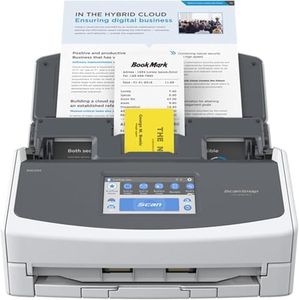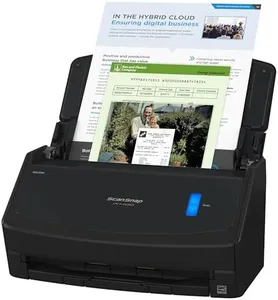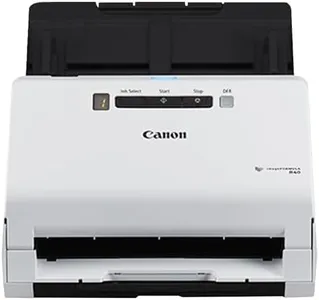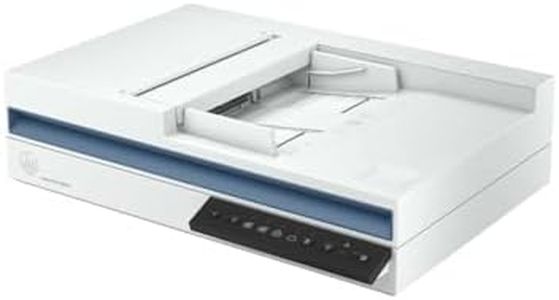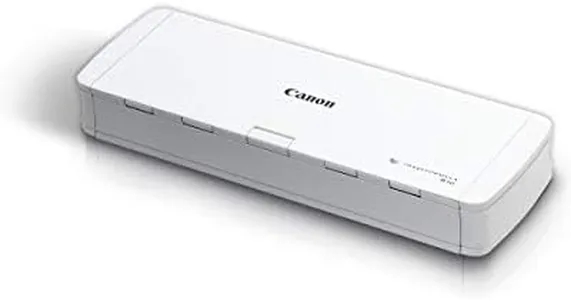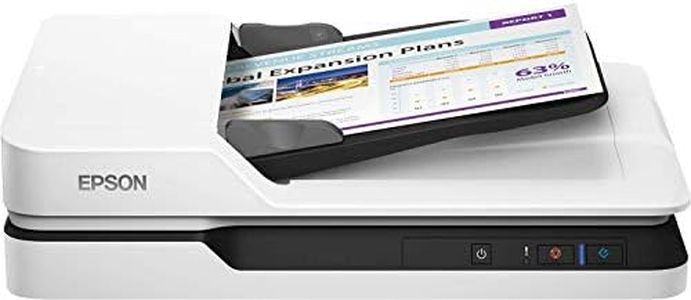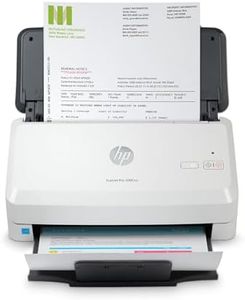We Use CookiesWe use cookies to enhance the security, performance,
functionality and for analytical and promotional activities. By continuing to browse this site you
are agreeing to our privacy policy
10 Best Double Sided Scanner
From leading brands and best sellers available on the web.Buying Guide for the Best Double Sided Scanner
Choosing a double-sided scanner can seem overwhelming, but understanding your needs and the key features will help you find the best fit. Double-sided, or duplex, scanners can scan both sides of a document at once, saving time and effort—especially helpful if you deal with two-sided paperwork often. Begin by considering how often you’ll use the scanner, the type of documents you’ll work with (photos, receipts, contracts), and your desired speed and workflow.Duplex Scanning TypeThis refers to how a scanner captures both sides of the page. There are two main kinds: single-pass duplex (scans both sides at the same time) and double-pass duplex (one side, then flips the page to scan the other). Single-pass is faster and better for large, frequent batches, while double-pass is fine for light or occasional use. Think about how many two-sided documents you handle daily—if it's a lot, look for single-pass.
Scan SpeedScan speed is usually given in pages per minute (ppm) and images per minute (ipm; accounting for both sides of a page). Higher speed means more pages scanned quickly. If you have heavy loads of documents, pick a scanner with higher ppm/ipm. For occasional or personal use, a moderate speed is likely plenty.
Document Feeder CapacityAn automatic document feeder (ADF) lets you load a stack of pages to be scanned automatically. Capacity tells you how many sheets fit at once. Large batches and busy workflows benefit from higher capacity ADFs, minimizing time spent reloading paper, while for light use, a smaller feeder is sufficient.
Optical ResolutionThis tells you the clarity of scans, measured in dots per inch (dpi). For most document scanning, 200-600 dpi is adequate. For photos or small text, consider higher dpi. High-resolution scanning takes more storage and time, so pick a balance based on what you usually scan.
Size and PortabilityScanners range from compact desktop models to large office machines. If you have limited space or plan to travel with your scanner, a smaller, lighter model is preferable. For stationary office use or larger volumes, size might be less of a concern.
Supported Media TypesSome scanners handle only standard office paper, while others accept thick card stock, business cards, receipts, or even fragile documents. If your work involves various paper types, look for a model with flexible media handling. For standard documents, basic compatibility is fine.
Connectivity OptionsConnection methods include USB, Wi-Fi, Ethernet, or even mobile device compatibility. USB is standard for most users, but Wi-Fi or network connections are great if you want to share the scanner among several people or operate wirelessly. Consider how and where you’ll use the scanner to choose the best connection type.
Software and IntegrationMost scanners come with software for handling scanned documents—basic utilities, OCR (optical character recognition) for making PDFs searchable, and options for directly sending documents to cloud storage. Make sure the software meets your needs and works with your computer's operating system. If you need smooth digital archiving and editing, check for robust OCR or integrated workflow support.
